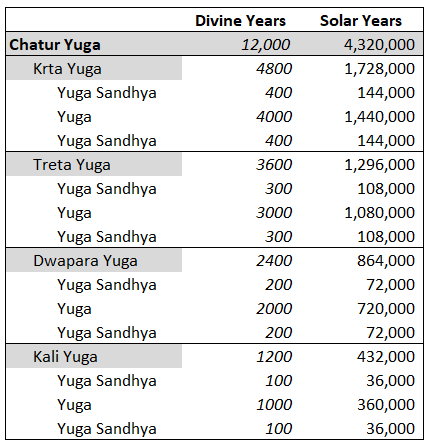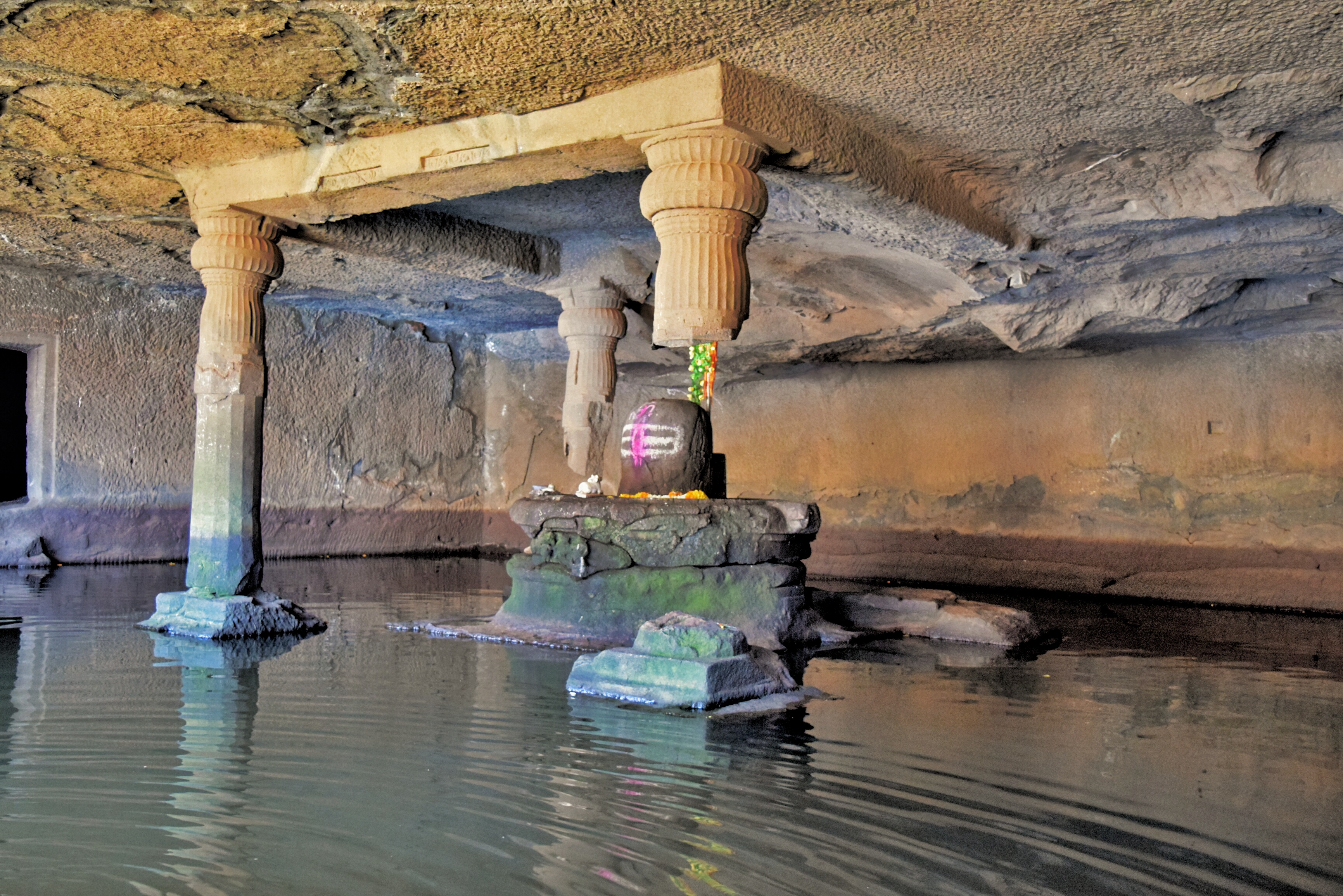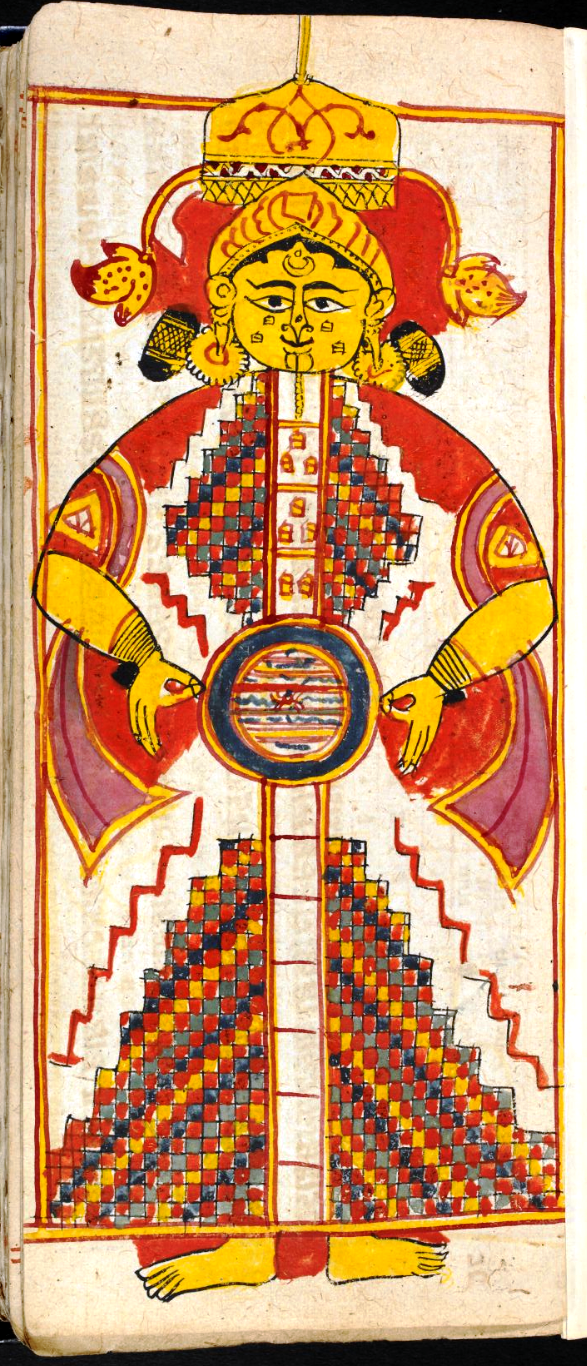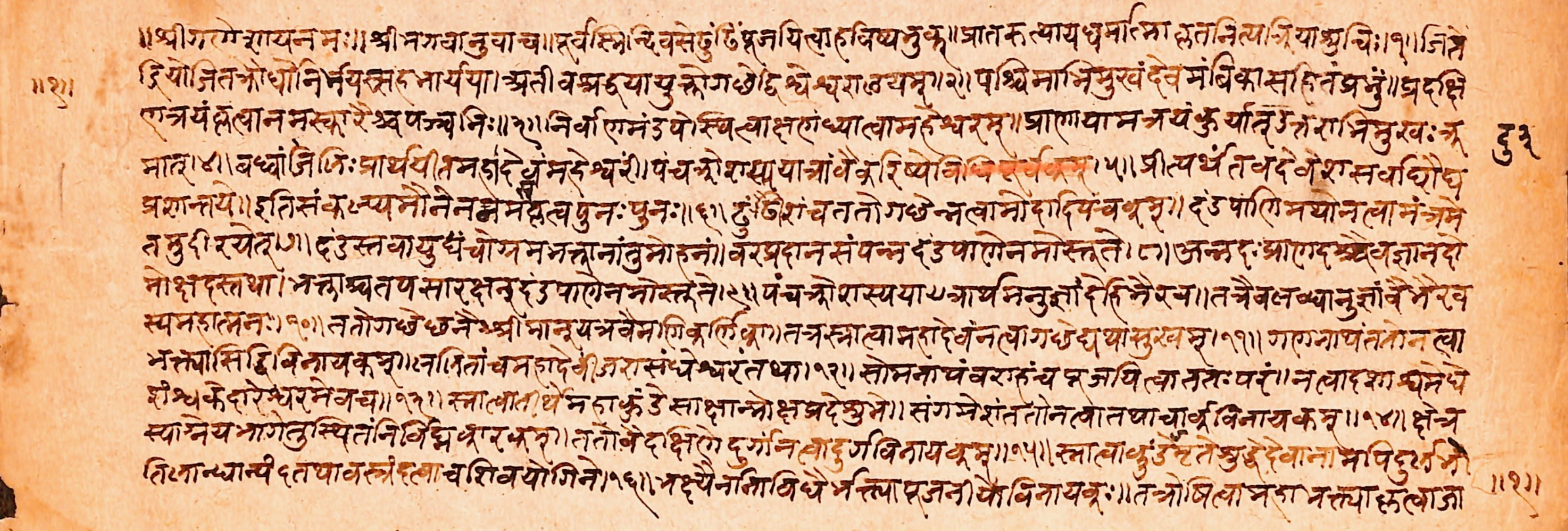|
Pralaya
Pralaya ( sa, प्रलय, , Apocalypse or the Annihilation of the Universe, translit=Pralaya) is a concept in Hindu eschatology. Generally referring to four different phenomena, it is most commonly used to indicate the event of the dissolution of the entire universe that follows a '' kalpa'' (a period of 4.32 billion years) called the ''Brahmapralaya''. Pralaya also refers to ''Nityapralaya'', the continuous destruction of all animate and inanimate beings that occurs on a daily basis, ''Prakritapralaya'', the great flood produced by Prakriti (Nature) that ends all of creation after the completion of the Chaturyuga (four-age) cycle, and ''Atyantikapralaya'', the dissolution of one's Atman (Self) due to its union with Brahman (Ultimate Reality). A concept that has been referenced in literature since the Upanishads, the concept of pralaya has been widely discussed in Hindu cosmology as well as philosophy. Description Hindu cosmology posits an endless cycle of the peri ... [...More Info...] [...Related Items...] OR: [Wikipedia] [Google] [Baidu] |
Kalpa (time)
A ''kalpa'' is a long period of time (aeon) in Hindu and Buddhist cosmology, generally between the creation and recreation of a world or universe. Etymology ''Kalpa'' ( sa, कल्प, , a formation or creation) in this context, means "a long period of time (aeon) related to the lifetime of the universe (creation)." It is derived from ''कॢप्'' (kḷp) + -अ (-a, nominalizing suffix) ( sa, कॢप्, kḷp, to create, prepare, form, produce, compose, invent). Hinduism In Hinduism, a ''kalpa'' is equal to 4.32 billion years, a "day of Brahma" (12-hour day proper) or one thousand '' mahayugas'', measuring the duration of the world. Each ''kalpa'' is divided into 14 ''manvantara'' periods, each lasting 71 ''Yuga Cycles'' (306,720,000 years). Preceding the first and following each ''manvantara'' period is a juncture (''sandhya'') equal to the length of a ''Satya Yuga'' (1,728,000 years). A ''kalpa'' is followed by a ''pralaya'' (dissolution) of equa ... [...More Info...] [...Related Items...] OR: [Wikipedia] [Google] [Baidu] |
Yuga Cycle
A ''Yuga'' Cycle ( ''chatur yuga'', ''maha yuga'', etc.) is a cyclic age (epoch) in Hindu cosmology. Each cycle lasts for 4,320,000 years (12,000 divine years) and repeats four '' yugas'' (world ages): '' Krita (Satya) Yuga'', '' Treta Yuga'', ''Dvapara Yuga'', and ''Kali Yuga''. As a ''Yuga'' Cycle progresses through the four ''yugas'', each '' yuga's'' length and humanity's general moral and physical state within each ''yuga'' decrease by one-fourth. ''Kali Yuga'', which lasts for 432,000 years, is believed to have started in 3102 BCE. Near the end of ''Kali Yuga'', when virtues are at their worst, a cataclysm and a re-establishment of ''dharma'' occur to usher in the next cycle's ''Satya Yuga'', prophesied to occur by Kalki. There are 71 ''Yuga'' Cycles in a '' manvantara'' (age of Manu) and 1,000 ''Yuga'' Cycles in a ''kalpa'' (day of Brahma). Lexicology A ''Yuga'' Cycle has several names. Age or '' Yuga'' ( sa, युग, , an age of the gods): : "Age" and "''Yuga''", so ... [...More Info...] [...Related Items...] OR: [Wikipedia] [Google] [Baidu] |
Treta Yuga
''Treta Yuga'', in Hinduism, is the second and second best of the four '' yugas'' (world ages) in a '' Yuga Cycle'', preceded by '' Krita (Satya) Yuga'' and followed by ''Dvapara Yuga''. ''Treta Yuga'' lasts for 1,296,000 years (3,600 divine years). ''Treta'' means 'a collection of three things' in Sanskrit, and is so called because during the ''Treta Yuga'', there were three Avatars of Vishnu that were seen, the fifth, sixth and seventh incarnations as Vamana, Parashurama and Rama, respectively. The bull of Dharma symbolizes that morality stood on three legs during this period. It had all four legs in the ''Satya Yuga'' and two in the succeeding ''Dvapara Yuga''. Currently, in the immoral age of '' Kali'', it stands on one leg. Etymology '' Yuga'' ( sa, युग), in this context, means "an age of the world", where its archaic spelling is ''yug'', with other forms of ''yugam'', , and ''yuge'', derived from ''yuj'' ( sa, युज्, , to join or yoke), believed derived from ... [...More Info...] [...Related Items...] OR: [Wikipedia] [Google] [Baidu] |
Rudra
Rudra (; sa, रुद्र) is a Rigvedic deity associated with Shiva, the wind or storms, Vayu, medicine, and the hunt. One translation of the name is 'the roarer'. In the Rigveda, Rudra is praised as the 'mightiest of the mighty'. Rudra means "who eradicates problems from their roots". Depending upon the periodic situation, Rudra can mean 'the most severe roarer/howler' (could be a hurricane or tempest) or 'the most frightening one'. This name appears in the Shiva Sahasranama, and R. K. Sharma notes that it is used as a name of Shiva often in later languages. The '' Shri Rudram'' hymn from the Yajurveda is dedicated to Rudra and is important in the Shaivism sect.For an overview of the Śatarudriya see: . In Prathama Anuvaka of Namakam ( Taittiriya Samhita 4.5), Sri Rudram the 'mightiest of the mighty' Rudra, is revered as '' Sadasiva (meaning 'mighty Shiva')'' and Mahadeva. Sadashiva is the Supreme Being, Lord Paramashiva in the Mantra marga Siddhanta sect of Shai ... [...More Info...] [...Related Items...] OR: [Wikipedia] [Google] [Baidu] |
Satya Yuga
''Satya Yuga'' ( ''Krita Yuga''), in Hinduism, is the first and best of the four '' yugas'' (world ages) in a ''Yuga Cycle'', preceded by ''Kali Yuga'' of the previous cycle and followed by ''Treta Yuga''. ''Satya Yuga'' lasts for 1,728,000 years (4,800 divine years). ''Satya Yuga'' is known as the age of truth, when humanity is governed by gods, and every manifestation or work is close to the purest ideal and humanity will allow intrinsic goodness to rule supreme. It is sometimes referred to as the "Golden Age". The god ''Dharma'' (depicted in the form of a bull), which symbolizes morality, stood on all four legs during this period. The legs of ''Dharma'' reduce by one in each ''yuga'' that follows. Etymology '' Yuga'' ( sa, युग), in this context, means "an age of the world", where its archaic spelling is ''yug'', with other forms of ''yugam'', , and ''yuge'', derived from ''yuj'' ( sa, युज्, , to join or yoke), believed derived from ' (Proto-Indo-European: 'to ... [...More Info...] [...Related Items...] OR: [Wikipedia] [Google] [Baidu] |
Kali Yuga
''Kali Yuga'', in Hinduism, is the fourth and worst of the four '' yugas'' (world ages) in a '' Yuga Cycle'', preceded by ''Dvapara Yuga'' and followed by the next cycle's '' Krita (Satya) Yuga''. It is believed to be the present age, which is full of conflict and sin. The "Kali" of ''Kali Yuga'' means "strife", "discord", "quarrel", or "contention" and ''Kali Yuga'' is associated with the demon Kali (not to be confused with the goddess Kālī). According to Puranic sources, Krishna's death marked the end of ''Dvapara Yuga'' and the start of ''Kali Yuga'', which is dated to 17/18 February 3102 BCE. Lasting for 432,000 years (1,200 divine years), ''Kali Yuga'' began years ago and has years left as of CE. ''Kali Yuga'' will end in the year 428,899 CE. Etymology '' Yuga'' ( sa, युग), in this context, means "an age of the world", where its archaic spelling is ''yug'', with other forms of ''yugam'', , and ''yuge'', derived from ''yuj'' ( sa, युज� ... [...More Info...] [...Related Items...] OR: [Wikipedia] [Google] [Baidu] |
Dvapara Yuga
''Dvapara Yuga'' ( Dwapara Yuga), in Hinduism, is the third and third best of the four '' yugas'' (world ages) in a '' Yuga Cycle'', preceded by '' Treta Yuga'' and followed by '' Kali Yuga''. ''Dvapara Yuga'' lasts for 864,000 years (2,400 divine years). According to the Puranas, this ''yuga'' ended when Krishna returned to his eternal abode of Vaikuntha. There are only two pillars of religion during the ''Dvapara Yuga'': compassion and truthfulness. Vishnu assumes the colour yellow and the Vedas are categorized into four parts: '' Rig Veda'', '' Sama Veda'', '' Yajur Veda'' and '' Atharva Veda''. During these times, the Brahmins are knowledgeable of two or three of these but rarely have studied all the four Vedas thoroughly. Accordingly, because of this categorization, different actions and activities come into existence. Etymology '' Yuga'' ( sa, युग), in this context, means "an age of the world", where its archaic spelling is ''yug'', with other forms of ''yugam'', , ... [...More Info...] [...Related Items...] OR: [Wikipedia] [Google] [Baidu] |
Shiva Purana
The ''Shiva Purana'' is one of eighteen major texts of the ''Purana'' genre of Sanskrit texts in Hinduism, and part of the Shaivism literature corpus. It primarily revolves around the Hindu god Shiva and goddess Parvati, but references and reveres all gods. The ''Shiva Purana'' asserts that it once consisted of 100,000 verses set out in twelve Samhitas (Books), however the Purana adds that it was abridged by Sage Vyasa before being taught to Romaharshana. The surviving manuscripts exist in many different versions and content, with one major version with seven books (traced to South India), another with six books, while the third version traced to the medieval Bengal region of the Indian subcontinent with no books but two large sections called ''Purva-Khanda'' (Previous Section) and ''Uttara-Khanda'' (Later Section). The two versions that include books, title some of the books same and others differently. The Shiva Purana, like other Puranas in Hindu literature, was likely a livi ... [...More Info...] [...Related Items...] OR: [Wikipedia] [Google] [Baidu] |
Patala
In Indian religions, Patala (Sanskrit: पाताल, IAST: pātāla, lit. ''that which is below the feet''), denotes the subterranean realms of the universe – which are located under the earthly dimension. Patala is often translated as underworld or netherworld. Patala is described as more beautiful than Svarga (subtle dimensions, loosely translated as heaven). Patala is described as filled with splendid jewels, beautiful groves and lakes. In Vajrayana Buddhism, caves inhabited by asuras are entrances to Patala; these asuras, particularly female asuras, are often "tamed" (converted to Buddhism) as dharmapala or dakinis by famous Buddhist figures such as Padmasambhava. In Hindu cosmology, the universe is divided into the three worlds: Svarga, Prithvi or Martya (earth/mortal plane) and Patala (gross dimensions, the underworld). Patala is composed of seven realms/dimensions or lokas, the seventh and lowest of them is also called Patala or Naga-loka, the region of the N ... [...More Info...] [...Related Items...] OR: [Wikipedia] [Google] [Baidu] |
Loka
Loka () is a concept in Hinduism and other Indian religions, that may be translated as a planet, the universe, a plane, or a realm of existence. In some philosophies, it may also be interpreted as a mental state that one can experience. A primary concept in several Indian religions is the idea that different lokas are home to various divine beings, and one takes birth in such realms based on their karma. Hinduism Three lokas The most common classification of lokas in Hinduism is the Trailokya, or the three worlds. The concept of the three worlds has a number of different interpretations in Hindu cosmology. In Hindu literature, the three worlds refer to either the earth (Bhuloka), heaven (Svarga), and hell ( Naraka), or the earth (Bhuloka), heaven (Svarga), and the netherworld ( Patala) Bhuloka In the Narada Purana, Bhuloka is identified with the planet Earth, the world of human beings. It is described to be split up into seven regions, referred to as dvipas (islands). T ... [...More Info...] [...Related Items...] OR: [Wikipedia] [Google] [Baidu] |
Trailokya
Trailokya ( sa, त्रैलोक्य; Kannada: ತ್ರೈಲೋಕ್ಯ; pi, tiloka, Tibetan: khams gsum; Chinese: 三界) literally means "three worlds"Fischer-Schreiber ''et al.'' (1991), p. 230, entry for "Triloka." Here, synonyms for ''triloka'' include ''trailokya'' and ''traidhātuka''.Purucker (1999), entry for "Trailokya" (retrieved at http://www.theosociety.org/pasadena/etgloss/tho-tre.htm). It can also refer to "three spheres," "three planes of existence," "three realms" Berzin (2008) renders ''khams-gsum'' (Wylie; Tibetan) and ''tridhatu'' (Sanskrit) as "three planes of existence" and states that it is " metimes called 'the three realms.'" ''Tridhatu'' is a synonym of ''triloka'' where ''dhatu'' may be rendered as "dimension" or "realm" and ''loka'' as "world" or even "planet." and "three regions."Blavatsky (1892), pp. 336-7, entry for "Trailokya" (retrieved at http://www.phx-ult-lodge.org/ATUVWXYZ.htm#t). Conceptions of three worlds (tri- loka) appear in ... [...More Info...] [...Related Items...] OR: [Wikipedia] [Google] [Baidu] |
Agni Purana
The ''Agni Purana'', ( sa, अग्नि पुराण, ) is a Sanskrit text and one of the eighteen major Puranas of Hinduism. The text is variously classified as a Purana related to Shaivism, Vaishnavism, Shaktism and Smartism, but also considered as a text that covers them all impartially without leaning towards a particular theology. The text exists in numerous versions, some very different from others. The published manuscripts are divided into 382 or 383 chapters, containing between 12,000 and 15,000 verses. The chapters of the text were likely composed in different centuries, with earliest version probably after the 7th-century,Thomas Green (2001). ''Martial Arts of the World: An Encyclopedia'', ABC-CLIO, , page 282 but before the 11th century because the early 11th-century Persian scholar Al-Biruni acknowledged its existence in his memoir on India. The youngest layer of the text in the ''Agni Purana'' may be from the 17th century. The ''Agni Purana'' is a medieval ... [...More Info...] [...Related Items...] OR: [Wikipedia] [Google] [Baidu] |







%2C_folio_3_from_the_Shiva_Purana%2C_c._1828.jpg)



